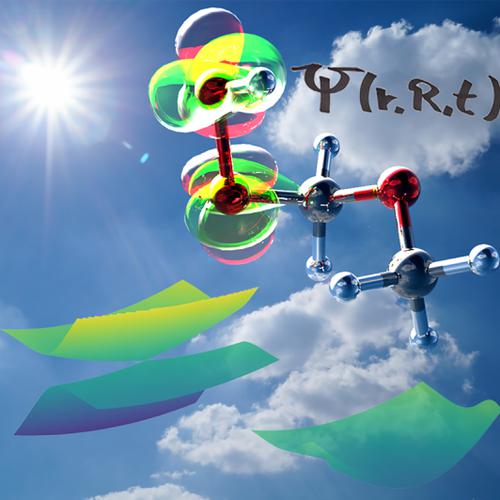当前位置:
X-MOL 学术
›
WIREs Comput. Mol. Sci.
›
论文详情
Our official English website, www.x-mol.net, welcomes your
feedback! (Note: you will need to create a separate account there.)
Different flavors of nonadiabatic molecular dynamics
Wiley Interdisciplinary Reviews: Computational Molecular Science ( IF 16.8 ) Pub Date : 2019-04-24 , DOI: 10.1002/wcms.1417 Federica Agostini 1 , Basile F. E. Curchod 2
Wiley Interdisciplinary Reviews: Computational Molecular Science ( IF 16.8 ) Pub Date : 2019-04-24 , DOI: 10.1002/wcms.1417 Federica Agostini 1 , Basile F. E. Curchod 2
Affiliation

|
The Born‐Oppenheimer approximation constitutes a cornerstone of our understanding of molecules and their reactivity, partly because it introduces a somewhat simplified representation of the molecular wavefunction. However, when a molecule absorbs light containing enough energy to trigger an electronic transition, the simplistic nature of the molecular wavefunction offered by the Born‐Oppenheimer approximation breaks down as a result of the now non‐negligible coupling between nuclear and electronic motion, often coined nonadiabatic couplings. Hence, the description of nonadiabatic processes implies a change in our representation of the molecular wavefunction, leading eventually to the design of new theoretical tools to describe the fate of an electronically‐excited molecule. This Overview focuses on this quantity—the total molecular wavefunction—and the different approaches proposed to describe theoretically this complicated object in non‐Born‐Oppenheimer conditions, namely the Born‐Huang and Exact‐Factorization representations. The way each representation depicts the appearance of nonadiabatic effects is then revealed by using a model of a coupled proton–electron transfer reaction. Applying approximations to the formally exact equations of motion obtained within each representation leads to the derivation, or proposition, of different strategies to simulate the nonadiabatic dynamics of molecules. Approaches like quantum dynamics with fixed and time‐dependent grids, traveling basis functions, or mixed quantum/classical like surface hopping, Ehrenfest dynamics, or coupled‐trajectory schemes are described in this Overview.
中文翻译:

非绝热分子动力学的不同风味
伯恩·奥本海默(Born-Oppenheimer)近似构成了我们对分子及其反应性理解的基石,部分原因是它引入了分子波函数的某种简化表示。但是,当分子吸收的光中包含的能量足以触发电子跃迁时,由于核运动和电子运动之间的耦合现在不可忽略,因此,Born-Oppenheimer逼近提供的分子波函数的简单性被打破了。非绝热偶合。因此,对非绝热过程的描述意味着我们对分子波函数的表示方式发生了变化,最终导致了设计新的理论工具来描述电子激发分子的命运。本概述着重于此数量-总分子波函数-以及为在非Born-Oppenheimer条件下理论上描述此复杂对象而建议的不同方法,即Born-Huang和Exact-Factorization表示。然后通过使用耦合的质子-电子转移反应模型来揭示每种表示形式的非绝热效应的方式。将近似值应用于在每种表示形式中获得的形式上精确的运动方程式,可以得出推导或命题,模拟分子非绝热动力学的不同策略。本概述中介绍了具有固定和随时间变化的网格的量子动力学,行进基函数或混合的量子/经典方法(如表面跳变,Ehrenfest动力学或耦合轨迹方案)等方法。
更新日期:2019-04-24
中文翻译:

非绝热分子动力学的不同风味
伯恩·奥本海默(Born-Oppenheimer)近似构成了我们对分子及其反应性理解的基石,部分原因是它引入了分子波函数的某种简化表示。但是,当分子吸收的光中包含的能量足以触发电子跃迁时,由于核运动和电子运动之间的耦合现在不可忽略,因此,Born-Oppenheimer逼近提供的分子波函数的简单性被打破了。非绝热偶合。因此,对非绝热过程的描述意味着我们对分子波函数的表示方式发生了变化,最终导致了设计新的理论工具来描述电子激发分子的命运。本概述着重于此数量-总分子波函数-以及为在非Born-Oppenheimer条件下理论上描述此复杂对象而建议的不同方法,即Born-Huang和Exact-Factorization表示。然后通过使用耦合的质子-电子转移反应模型来揭示每种表示形式的非绝热效应的方式。将近似值应用于在每种表示形式中获得的形式上精确的运动方程式,可以得出推导或命题,模拟分子非绝热动力学的不同策略。本概述中介绍了具有固定和随时间变化的网格的量子动力学,行进基函数或混合的量子/经典方法(如表面跳变,Ehrenfest动力学或耦合轨迹方案)等方法。











































 京公网安备 11010802027423号
京公网安备 11010802027423号